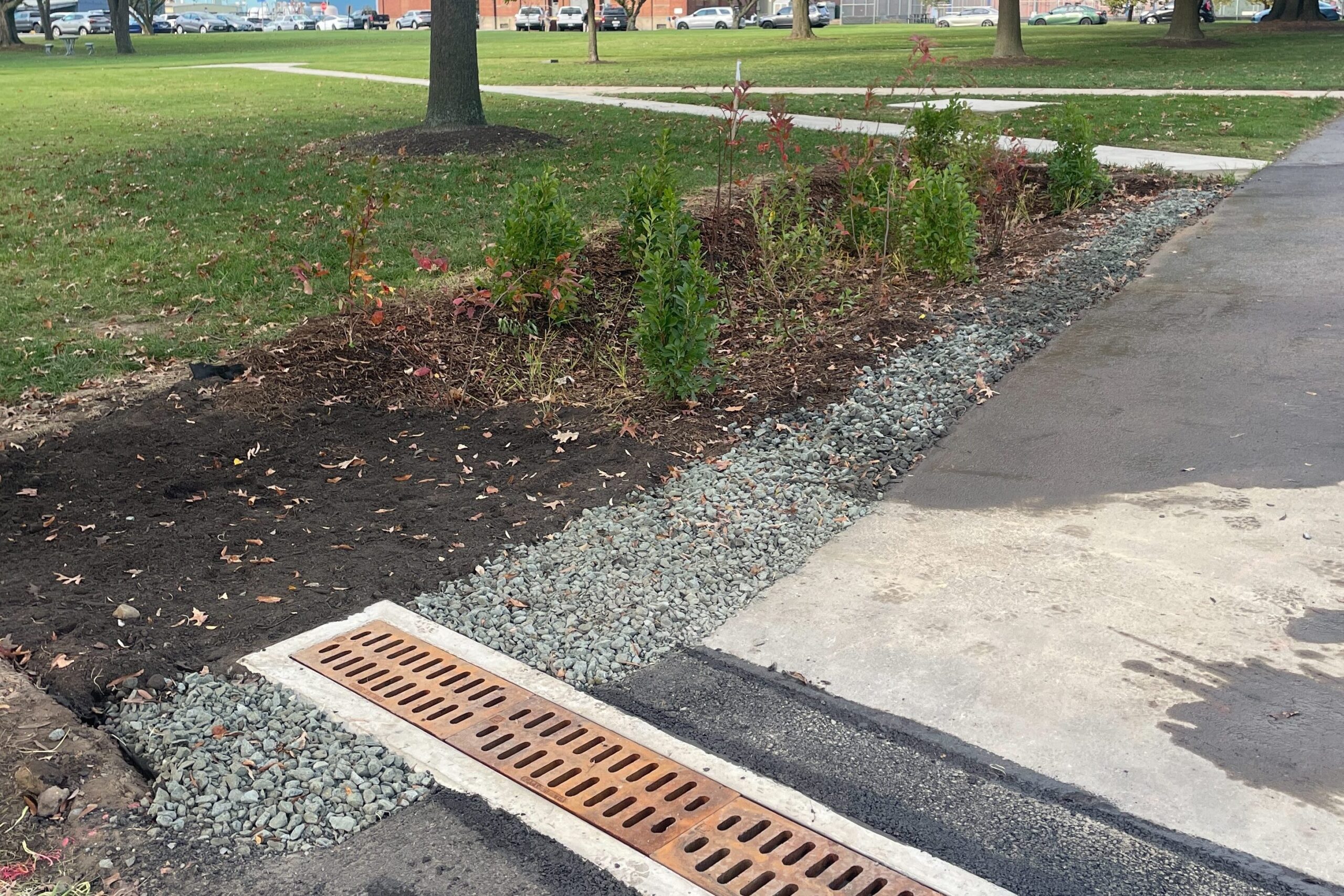
The US Coast Guard (USCG) operates a marine facility at Hawkins Point on Curtis Bay located just south of the I-695 Francis Scott Key Bridge in Anne Arundel County, Maryland. Stormwater runoff from the site drains directly into Curtis Creek, then to the tidal Patapsco River, and ultimately the Chesapeake.Bay.
SMC recently completed the construction of three bioretention retrofits that treat surface runoff from existing impervious areas at the site. Part of an overall MS-4 permit requirement for impervious area restoration, these vegetated practices remove runoff pollutants from three individual parking lots that were previously untreated. Designed by others, each of the facilities presented unique approaches and construction challenges. During the course of the work, the SMC team applied our depth of knowledge and significant experience to address unexpected situations and augment the design with creative construction solutions.
The three facilities were designed as bioretention trenches, with flows entering underground and storage occurring in the soil media and stone beneath the surface. The facilities relied on infiltration in lieu of underdrains, resolving elevation issues and reducing costs.
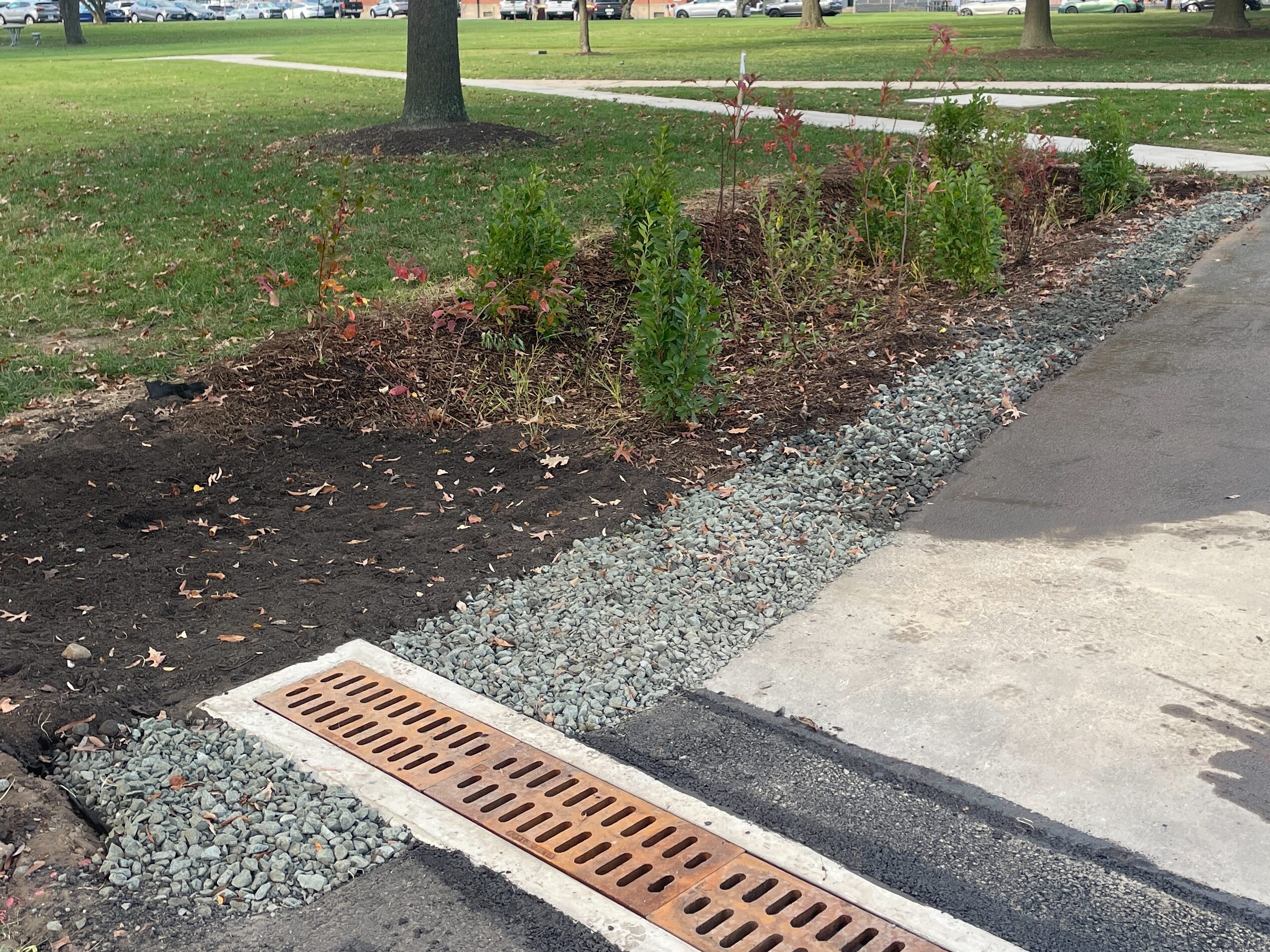
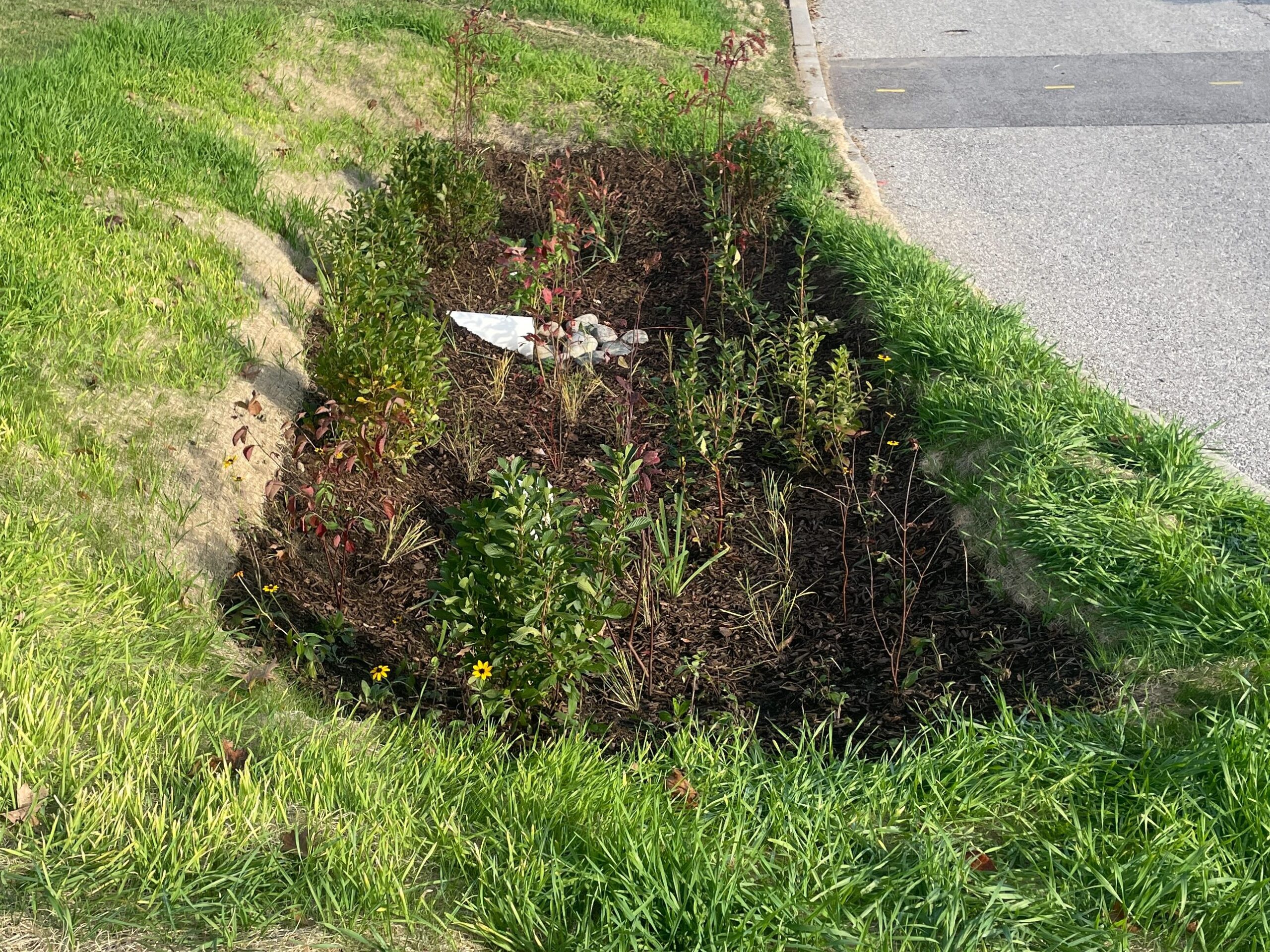
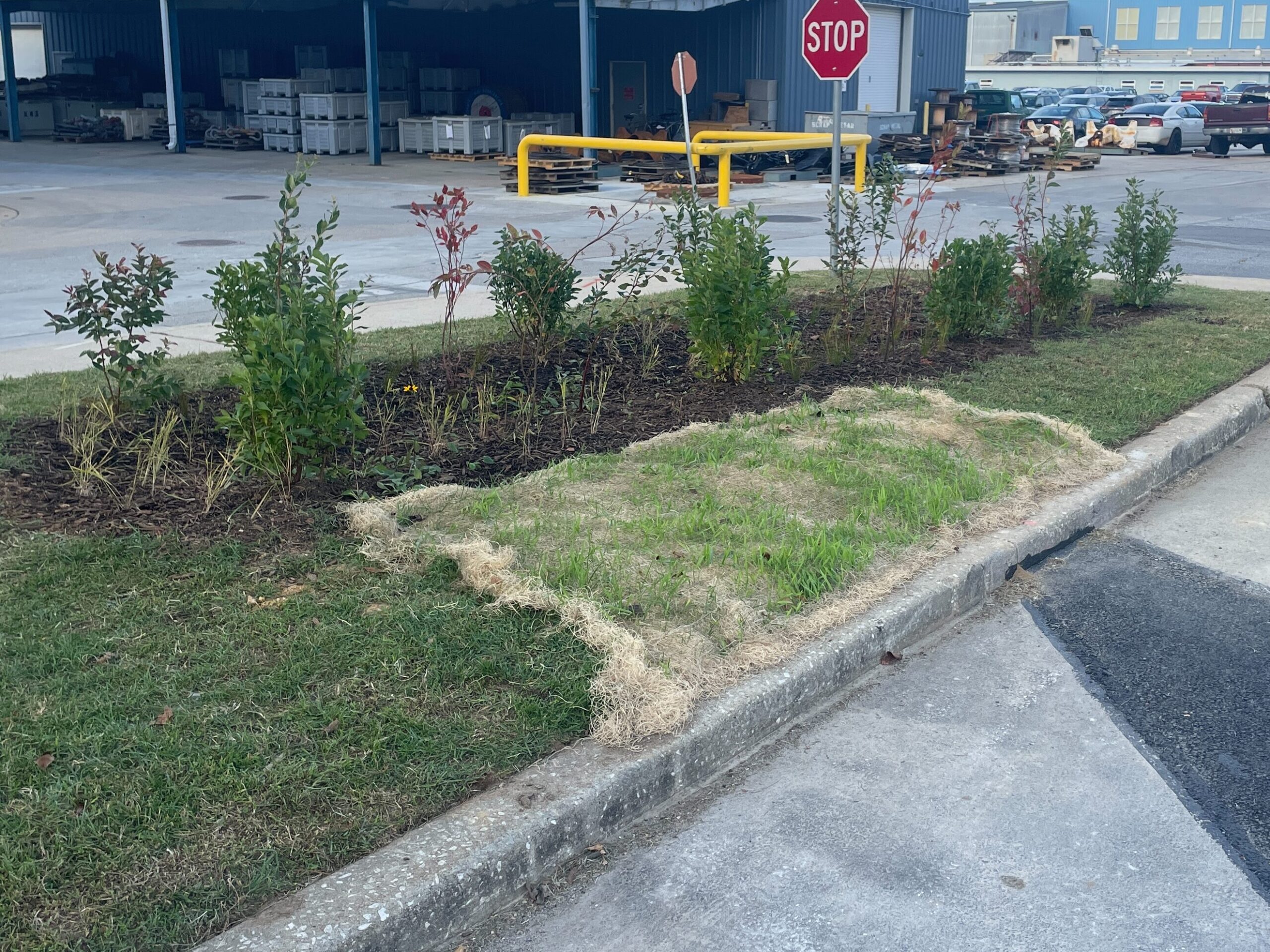
DRAINAGE CHALLENGES ON RETROFIT PROJECTS
One of the challenges in designing retrofit facilities in constrained urban contexts is the need to modify existing storm drain systems to capture and treat runoff. Traditional site grading and storm drain design focused on only conveyance and typically avoided flows onto green spaces. Conversely, designing green infrastructure often directs flows towards the green spaces for treatment in vegetated practices such as bioretention. Furthermore, existing elevations and slopes of legacy sites are not always consistent with what is needed for treatment.
In the case of the USCG site, the designer overcame these design challenges with creative solutions that involved modifications to the existing storm drain systems and subsurface discharge into the facilities, draining to bioretention trenches relying on infiltration into native soils.
Each of the three facilities approached drainage diversion differently. One required retrofit trench drain required saw cutting pavement and matching grade with precast units. Another was designed with a storm drain cut-in to divert flows, while the third involved installing a new pipe into an existing catch basin.
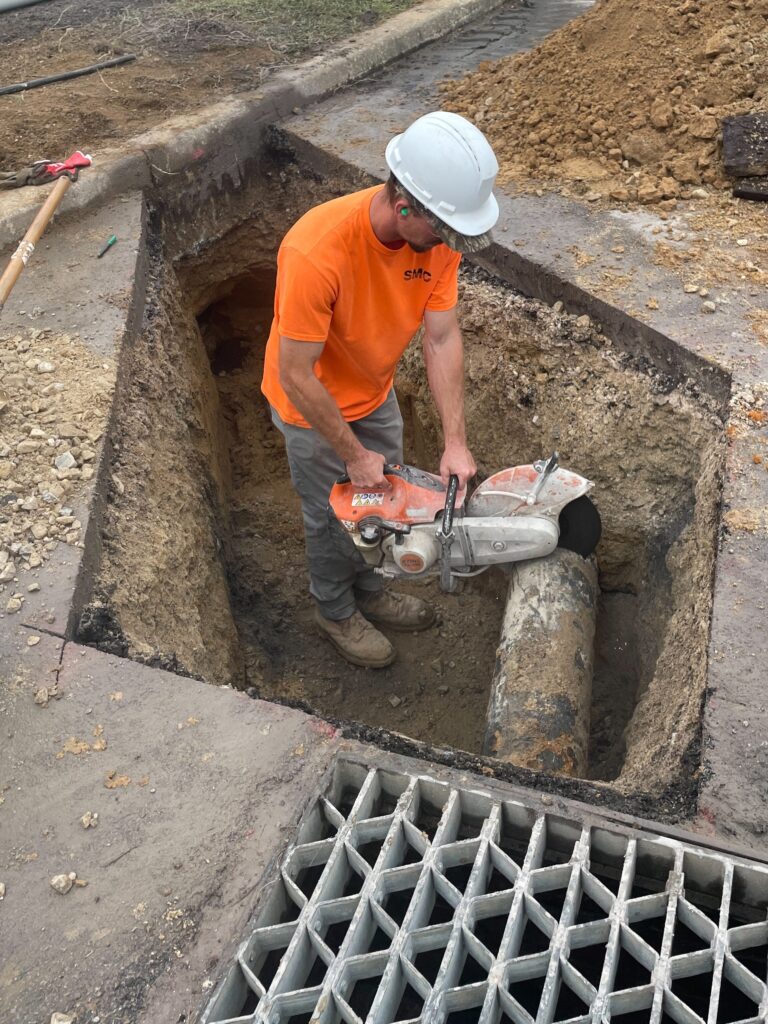
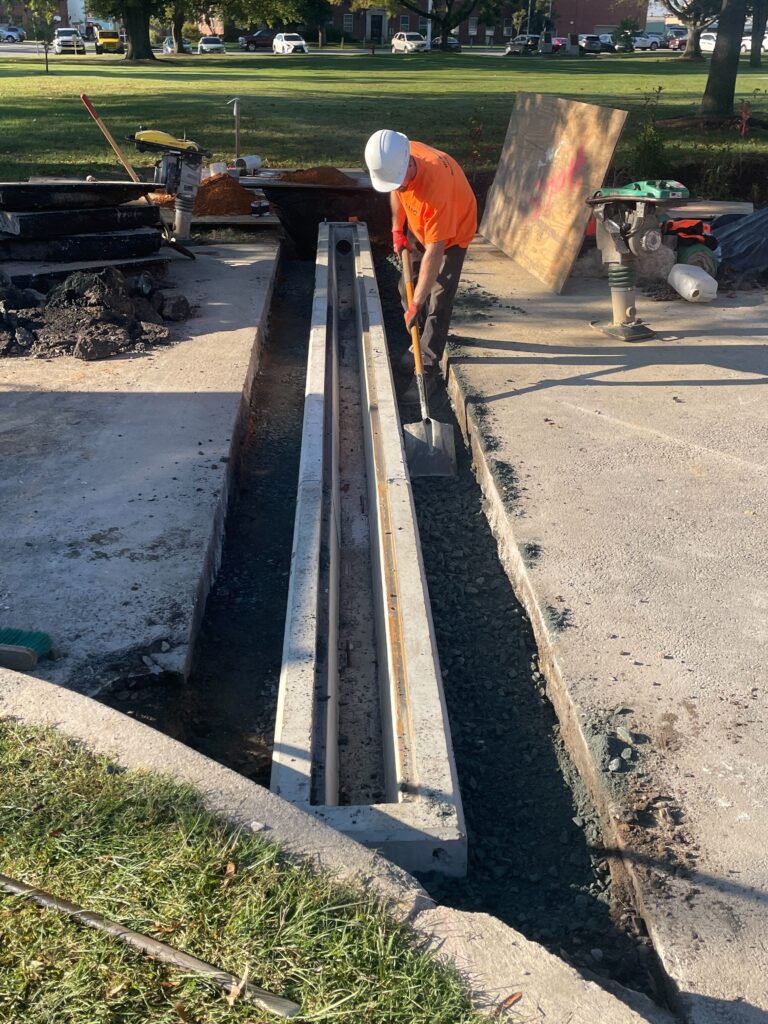
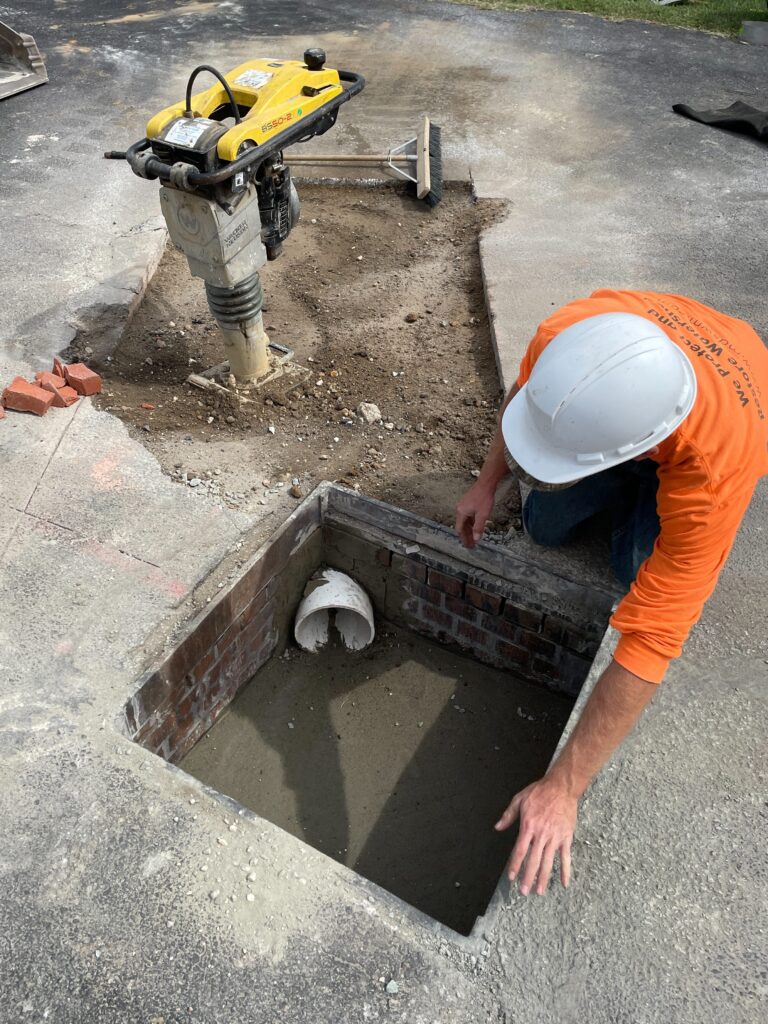
UTILITY CHALLENGES ON RETROFIT PROJECTS
In many cases, existing developed sites can have numerous utilities (electric, communication, water, sewer, duct banks, etc.) that were installed at various times over the course of many years by different contractors or public utilities. As a result, reliance on site or construction plans may have misleading locations or omit the existence of utilities entirely.
If utilities are discovered or located in the construction phase, the project can be delayed while alternative approaches and designs are developed. These delays can increase costs or even render a project unfeasible.
On the USCG project, numerous unknown or unanticipated utilities were encountered that required SMC to perform construction-phase investigation and develop creative adjustments and design changes. Existing storm drain elevations varied, which required adjustments of the elevations and design/build of a level spreader. Electric lines were encountered at the trench drain that required modification to the precast concrete unit. A communication duct bank was discovered in one of the facilities that required tunneling a storm drain beneath it and re-sizing and adjusting the location of the overall facility.
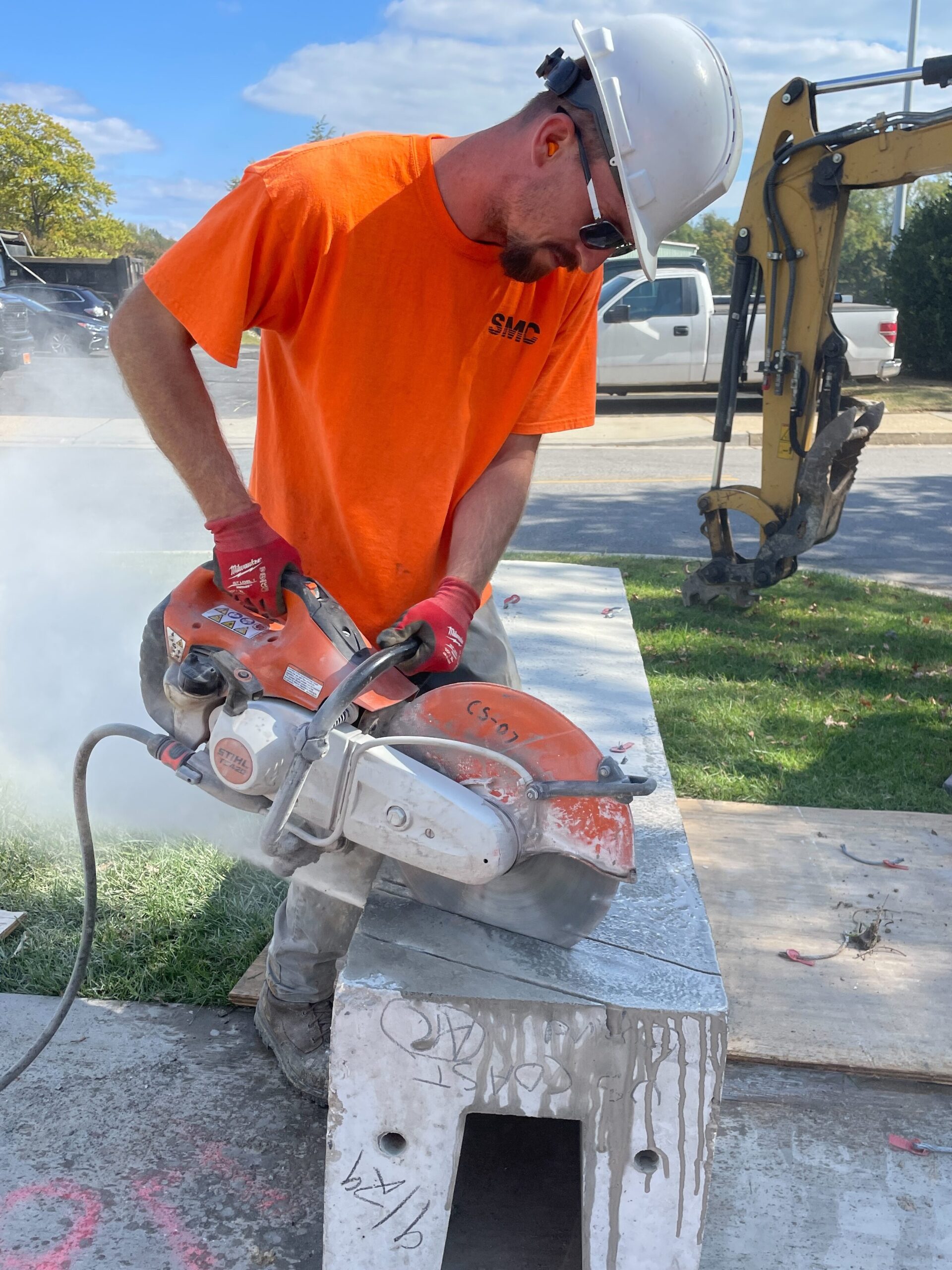

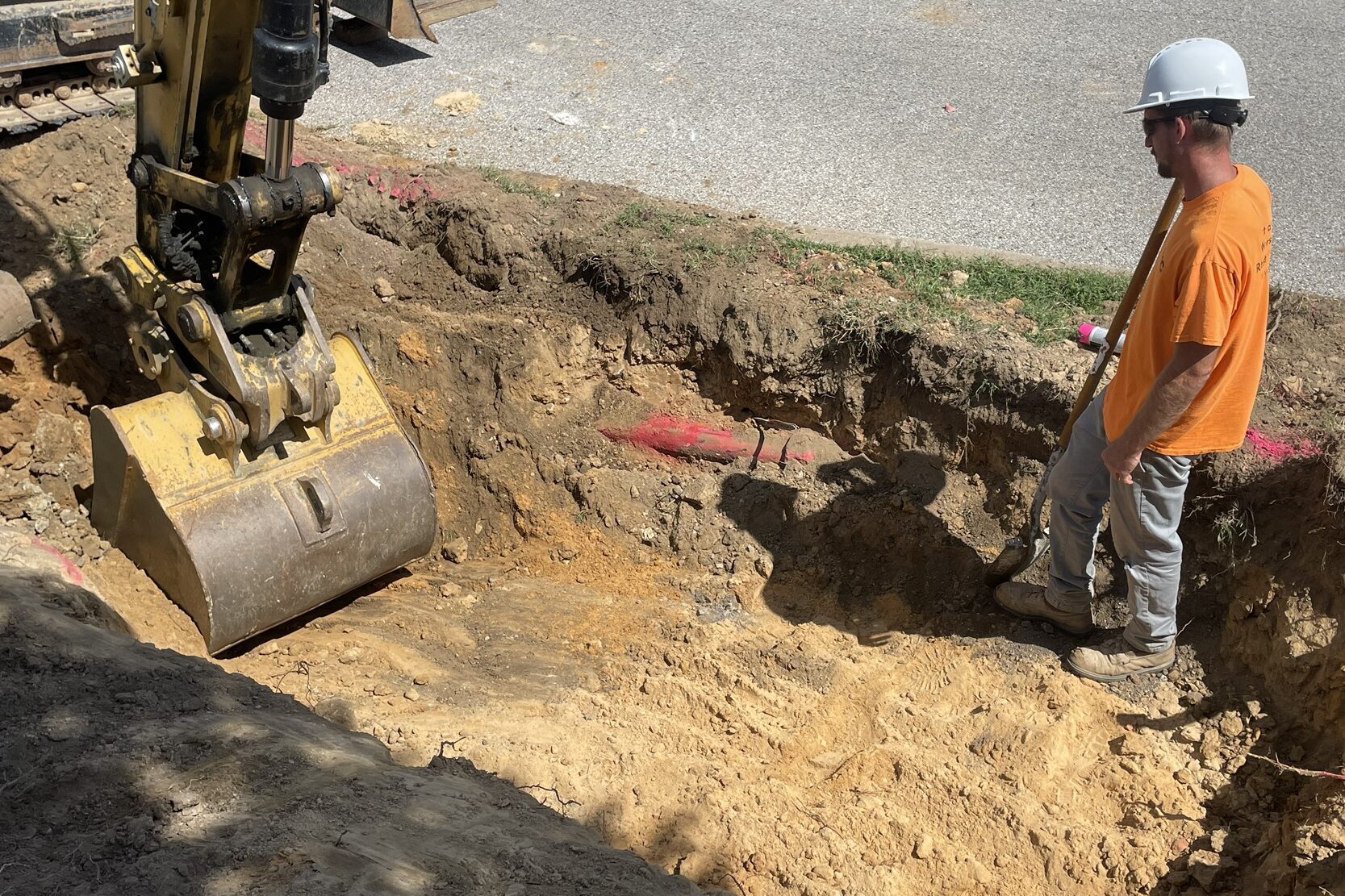
These types of circumstances are the reason why SMC has evolved to include in-house utility designation, location, CCTV investigation, and hydro-excavation capabilities. This project is a great example of how we can mobilize quickly to resolve questionable situations, modify designs, and keep project implementation moving ahead with little delay and additional costs.
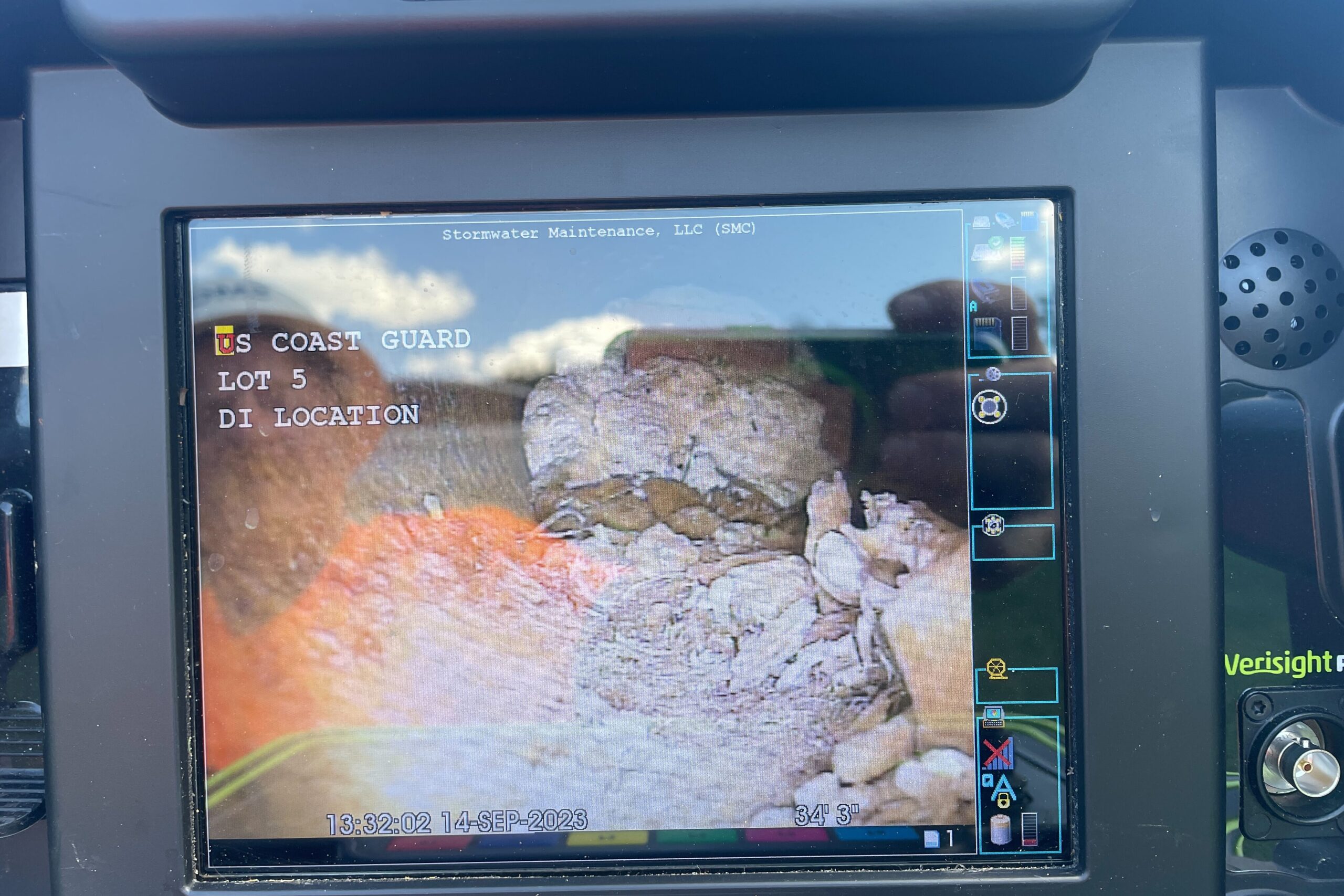
The SMC Team was pleased to work closely with the general contractor and USCG personnel, providing solutions to the utility and topographical challenges to achieve the intended scope while maintaining an aggressive production schedule.

